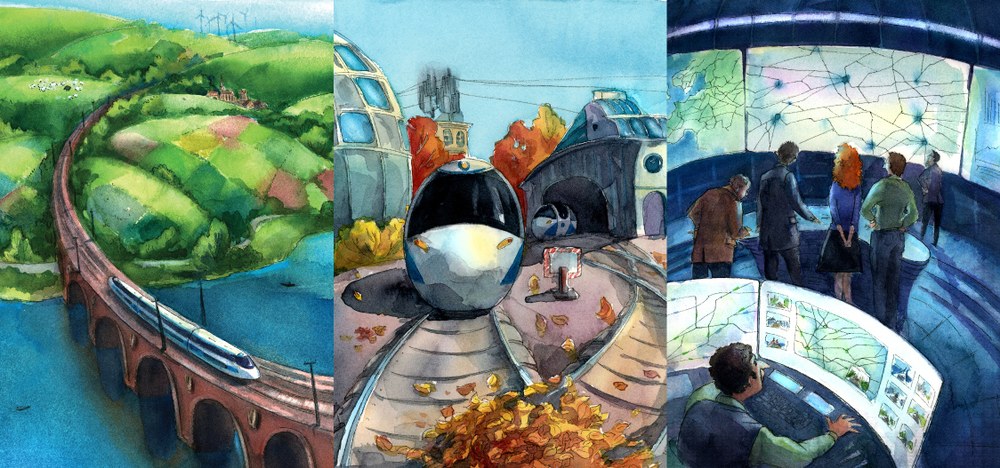TraCo
The TraCo project illuminates and focuses on railway operational issues on the way to a highly automated, holistic railway system of the future. The project is to be seen in the overall interplay with the other three content-related projects in the rail transport programme theme. In particular, the content-related proximity and cooperation with the InTra project is actively designed and organised. The focus of the work in TraCo is not exclusively on the final, completed and fully automated system, but also takes into account and consciously addresses corresponding intermediate steps on the way there. Among other things, the potential and possibilities in the interaction between humans and technology or automation will be considered and the technical equipment required for authorisation will be determined and tested using an "automation island".
Depending on the market segment (e.g. long-distance transport, freight transport) and the respective automation level, different equipment and interaction levels may become relevant, taking into account aspects of technical feasibility, safety, railway operation and economic efficiency. Furthermore, in the course of automation and here in particular through the introduction of corresponding technical system solutions, the necessity for the recording, provision, availability and targeted further use of a railway-specific data basis increases. Here, too, the project objective is not exclusively geared towards highly automated railway operations, but also analyses potentials and solutions that can already offer a corresponding advantage for today's railway system.
One example of this is the topic of continuous data acquisition and condition monitoring in real operations through to predictive maintenance management. Furthermore, the railway system can benefit from the linking of railway operational and logistical optimisation goals by analysing these, taking into account the corresponding boundary and framework conditions, and striving for joint optimisation. As a further aspect, possibilities for improving (automated) railway operations with regard to the above-mentioned aspects are considered. On the one hand, AI-based methods in the field of data analysis (anomaly detection) and the implementation of an AI dispatcher will be applied, and on the other hand, possibilities for actively optimising the crosswind stability of railway vehicles will also be considered. The latter can have a direct impact on safety, for example when increasing speed when cornering. This results in a reduction in journey time, which can be used for required buffer times and thus to increase the reliability of railway operations. The work just described focusses on the following four aspects:
➢ Collecting, managing, analysing and using vehicle and infrastructure data for digital information and management systems
➢ Active optimisation of crosswind stability by means of a responsive, self-adapting chassis or adaptive wind deflectors
➢ People and automation in digital and networked railway operations with the further use of artificial intelligence
➢ Conception and proof of concept for targeted, early, approvable automation on certain sections based on the TraCo part results

